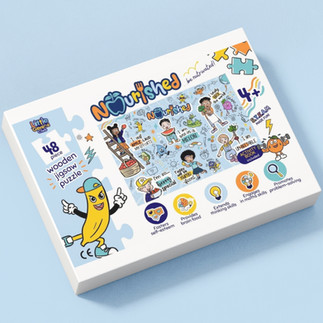There are several reports highlighting the fact that British parents find it challenging to get their kids to eat fruits and vegetables. The aim should be to create an environment where children explore vegetables in a positive environment, as this forms the foundation of a healthy relationship with food.
Here are nine ways:

Get them cooking:
Cooking with children helps them explore vegetables in many ways. Firstly, cooking creates opportunities for the child to harness their natural curiosity. For example, you can ask, "I wonder how our smoothie with look and taste if we had these beetroots?" Questions such as, "I wonder how we can cook these carrots to make them crispy on the outside" also create a sense of awe and wonder. When children are involved in the process of creating a meal or dish, they are more likely to be curious and willing to try it.

Explore food with all senses:
Exploring food is a multi-sensory experience, so it is not limited to just eating. Give children the opportunity to interact with vegetables by touching, smelling, and even playing with vegetables (example making vegetable characters and faces). This builds on their familiarity with the vegetable and likely to lead to their eating out of curiosity.

Involve children in shopping:
Taking children shopping is an excellent way to spark their curiosity about different foods. By allowing them to see and touch various vegetables, they will be more likely to try new vegetables. Consider taking your child to your local market or greengrocer and make it a fun experience by turning it into a game. For example, you can challenge them to spot three red vegetables.

Allow choice:
As a parent, your responsibility is to offer wholesome, nutritious food to your child. Consider meals that offer some choice and allow for the child to develop a healthy relationship with food. Try giving them options such as, "Would you child your carrots with a dip of steamed with broccoli?". Also, have mealtime options. For example, a roast dinner with a choice of different vegetables, or a themed taco meal with different fillings. Offer these choices through coercion or control.

Get creative with your presentation:
We all know the quote; "We eat with our eyes." This is also includes children. Consider ways in which vegetables can be served in a creative way. For example, rainbow pizzas (made with a variety of vegetables)

Use positive language:
It is important to keep in mind that the language we use when talking about food can have a significant impact on a child's attitudes and beliefs about it. This can ultimately affect their eating habits and overall health and well-being. Here are three effective strategies to communicate about food and nutrition:
1) use neutral language to avoid negative associations, 2) instead of telling the child what he “has to” or “needs to” eat, talk about how the vegetable nourishes their body.

Pair familiar with new
Presenting a plate full of unfamiliar foods can be overwhelming for children. To make it less intimidating, try pairing vegetables with familiar foods so that there is at least one comfortable item on the plate. As your child eats the familiar food, they may feel more inclined to try the new vegetable.

Choose both fresh and frozen:
It is a common misconception that fresh vegetables are more nutritious than frozen ones. Both fresh and frozen vegetables have different benefits over each other. Both however nourish the body by providing vitamins, minerals and fibre. Some children prepare the texture of cooked frozen vegetables.

Grow your own vegetables at home:
Studies have shown that growing vegetables has many benefits and that children are more likely to taste the food they have helped cultivate. Furthermore, encouraging children to be mini-gardeners and engage with and nurture their vegetables fosters a sense of ownership and increases the likelihood of consuming the vegetables.
Check out newest product - Nourished Wooden Puzzle.
Nutrition and motivation meet each other in this fun, vibrant, and educational puzzle. THE NUTRIVATES are a crew of fruits and vegetables who are motivating children using food-themed puns. Children learn best through play, and these food puns are an amazing source of
laughter and humour!
The fun does not stop there!
THE NUTRIVATES and THE GENIUS GANG,
teach children about the nutritional benefits of fruits and vegetables in a lighthearted way using superhero analogies in the accompanying
activity book.

.png)

.png)









